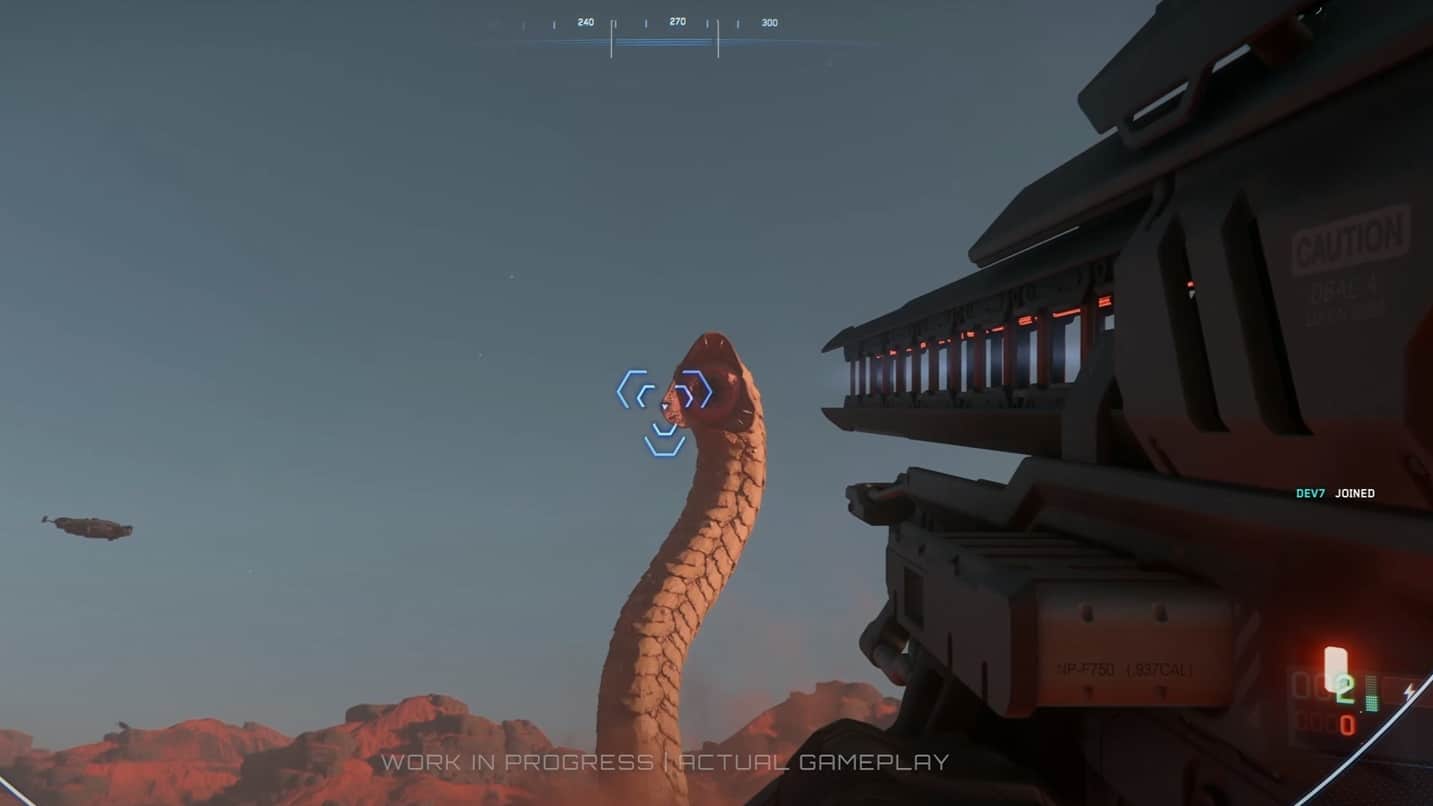In addition to the single-player mode Squadron 42, a number of other new features for the space simulation were announced at CitizenCon at the weekend, including changes to the weather and a new star system.
Last weekend was probably the most important time of the year for Star Citizen players That’s because the CitizenCon, the in-house exhibition of developer Cloud Imperium Games, took place in Manchester, UK, where the team announced many important innovations related to Star Citizen.
On the first day of the show, there was already tons of new information about the single-player campaign.Squadron 42
– this is finally scheduled to be released in 2026, 14 years after the game was first announced. But that was not all. With sandworms, new planets, ships and more sophisticated weather, the developers at Cloud Imperium Games have a whole range of other updates up their sleeves.
Brave New World
Among many other announcements at CitizenCon, fans will be pleased to hear that another star system is in the release pipeline.After Stanton, Pyro and Nyx, Castra will be the fourth system in Star Citizenand is located near Nix and the Xi’an territory.
During the presentation, two planets were already shown: Castra 1 is an inhospitable dead planet, too close to its parent star to allow for terraforming; Castra 2 Cascom
, on the other hand, is a populated planet and a center for trade and tourism. It is controlled by humanity and offers you the impressive landing zone Sherman, which is also called Island in the Sky because of its location.
This is how planets are created.
There was also interesting news about the technology behind the planets, or rather under the planet’s surface. In a panel with Star Citizen boss Chris Roberts, many minor changes to the previous Planet Tech were discussed, including, among other things, the fact that the biomes (landscape types) on the celestial bodies are to become more diverse.
To this end, physical rules are to be the basis for generating the planets in the future So far, only the factors of temperature and humidity have been taken into account; in the future, soil fertility, soil types and intensity of solar radiation are to be added.
The environmental factors will then affect the flora, so that two sides of a planet can look completely different. For example, high humidity and medium temperatures create swamp biomes.
Cloud formation should also improve in the end. So far, they have been static, but in the future they should be able to form and dissolve independently. The following Reddit video offers you a taste of all the new weather systems. And yes, the weather will be able to damage your ships.
CitizenCon Genesis Weather Demo
byu/H0LZ_Stamm instarcitizen
☻
That’s where the worm is
The future of Star Citizen also has appealing material in store for Dune fans.As Senior Systems Designer Zac Preece announced, you will be able to go worm hunting with your friends in the future. During the stage show, the developer showed a video that shows players on the planet Monox in the Pyro System attacking a sandworm.
And yes, the beast looks amazingly like its relatives on Arrakis. In the chat under the livestream, fans were already joking about whether they were actually dealing with the Shai-Hulud known from Dune. In fact, however, the worm here is called Valakkar
To make it appear, you first have to make noise with ground vehicles.
Despite its size, the worm is surprisingly mobile and can bring careless pilots down with its attacks. The potential rewards are well worth the risk: once you have killed the worm, players can disassemble the body to get valuable parts such as pearls and teeth. There are plans to add more large monsters to Star Citizen at a later date.
What else was announced?
- New ship series presented:The Starlancer class, roughly speaking, an extension of the Freelancer series.
- Crafting system announced:
Crafting your home
will enable you to build your own bases and spaceships. For this purpose, crafting is introduced, along with various levels of raw materials, components, etc., which you can refine in refineries. These in turn are then used to build not only parts of the base, but also weapons, tools and even spaceships.
- A brief look at the future: When version 1.0 of Star Citizen is released, the space game should offer five entire star systems. After Castra, the Terra system will be implemented accordingly. The latter should be of particular interest to Lore enthusiasts, as the system is vying with the Sol system for supremacy in the United Empire of Earth.
The only downer is that no final release date has been announced for much of the content shown. This is because only the Squadron 42 single-player campaign is scheduled to be released in 2026. Other content, on the other hand, is likely to be a long time in coming. After more than 14 years in development, however, many fans are slowly growing tired of waiting and would like to see Star Citizen finally present a concrete release roadmap.
In recent years, fans have also made considerable financial advances. To date, the crowdfunding campaign for Star Citizen and its solo campaign has raised around $729 million in support funds.



